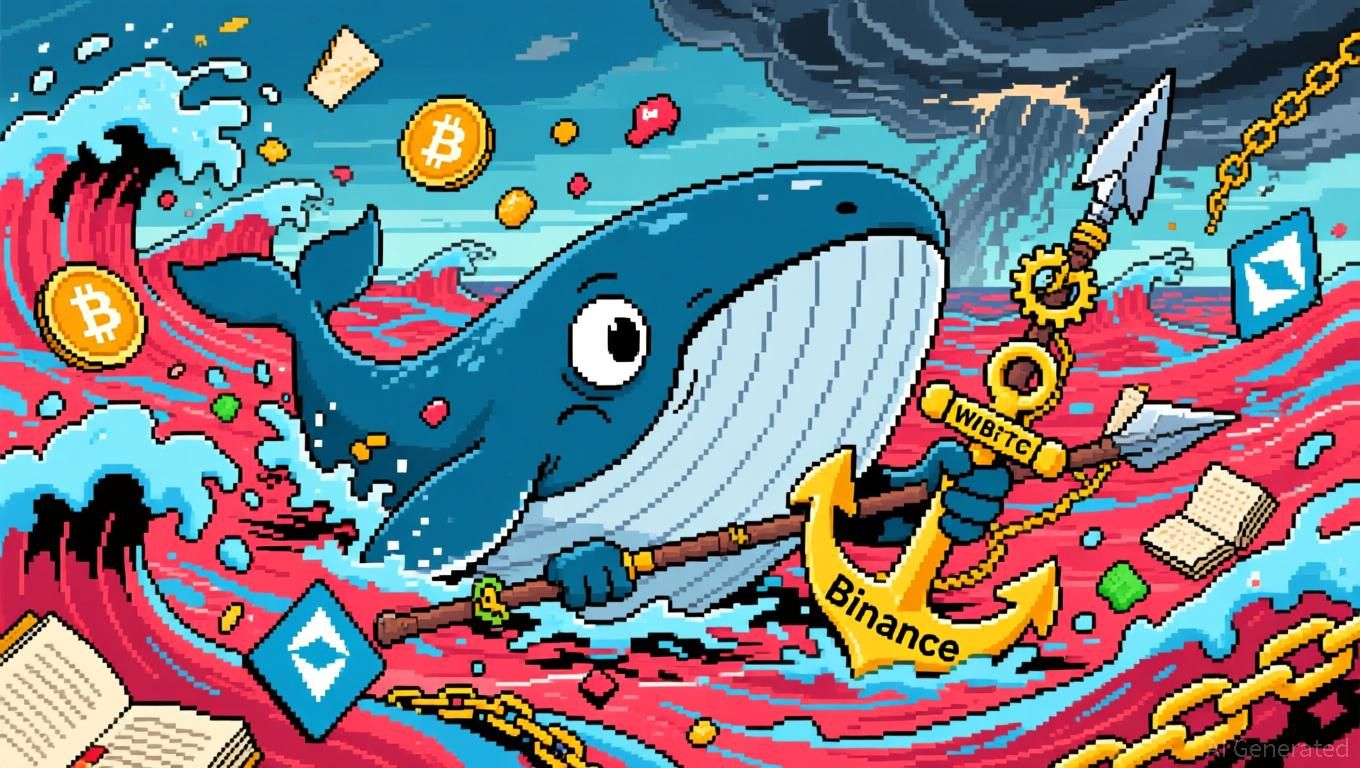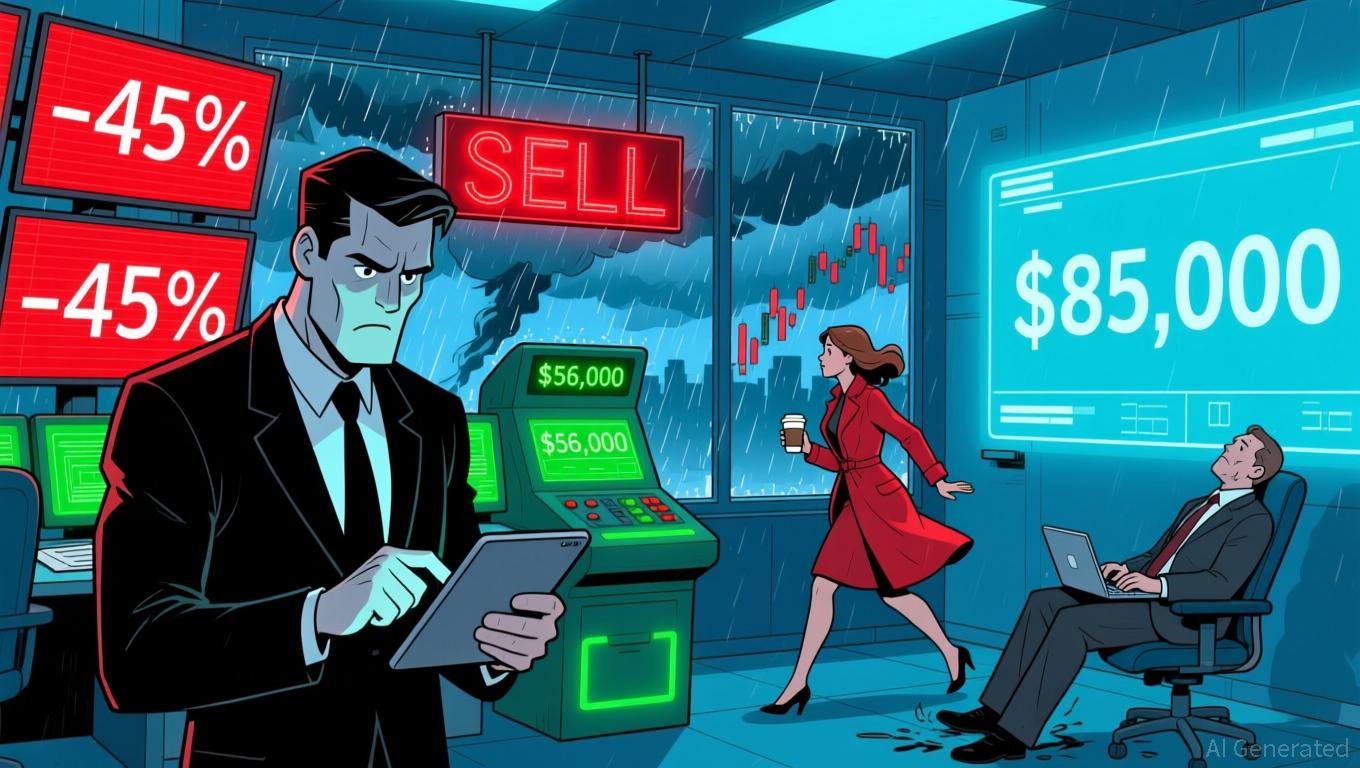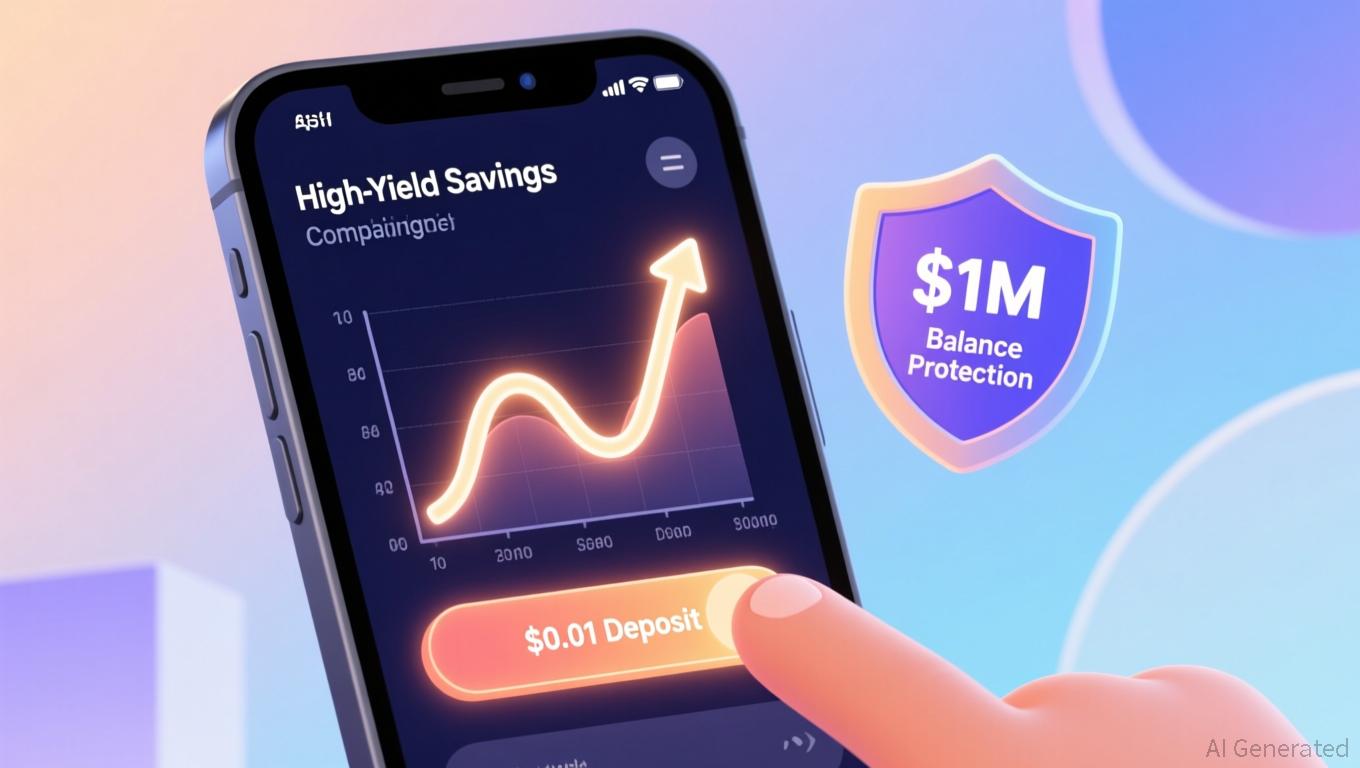COAI Token Fraud: Warning Signs in Cryptocurrency Ventures and Ways for Investors to Safeguard Themselves in 2025
- COAI token's 88% price drop in 2025 caused $116.8M losses, highlighting DeFi risks. - Technical flaws and regulatory gaps exposed systemic DeFi vulnerabilities through COAI's collapse. - 87.9% token concentration among ten wallets enabled manipulation and panic selling. - Experts urge due diligence, AI tools, and diversification to mitigate crypto risks. - The collapse underscores the need for transparency and unified global crypto regulations.
Warning Signs in the COAI Token Fraud
Technical Flaws and Smart Contract Hazards
The downfall of the COAI token revealed significant vulnerabilities within DeFi systems.A $116 million breach at the Balancer DeFi protocolin 2025 exposed the instability of smart contracts, while COAI’s own network was undermined by unstable leadership at C3.ai, including a class-action suit thatdamaged confidence. Those who neglected to confirm smart contract audits from trusted organizations such as CertiK or OpenZeppelinbecame susceptibleto widespread failures.Unclear Regulations and Disjointed Oversight
The CLARITY Act, which aimed to bring clarity to AI token rules,ended up causing uncertaintyamong U.S. authorities. At the same time, overlapping responsibilities—like the SEC and CFTC’s differing views on stablecoins—resulted in lapses in investor protection. In regions such as Southeast Asia, weak oversight and regulatory gaps allowed scams to flourish, as demonstrated bythe She Zhijiang case in Myanmar.Centralized Holdings and Market Manipulation
The distribution of COAI tokens showed87.9% held by just ten wallets, signaling excessive centralization. This setup enabled rapid sell-offs and price manipulation during liquidity issues. Such concentration often precedes collapse,as seen with the downfall of algorithmic stablecoinslikexUSDand deUSD.
Investor Protection Measures for 2025 and Beyond
Thorough Research and Evaluation
Specialists stress the importance of analyzing tokenomics, including how tokens are distributed, vesting schedules, and mechanisms to control inflationbased on industry insights. Projects with open and decentralized ownership are less likely to be manipulated. Investors should also check the security of smart contracts through public audits on sites like Etherscanas experts suggest.Verifying Teams and Communities
Teams that are anonymous or have unverifiable “advisors” are a major warning signaccording to security professionals. Investors should carefully review team members’ LinkedIn profiles and previous work. Genuine community involvement—reflected in active conversations on Telegram and Discord—often indicates authenticity, whilehype centered solely on price increasesshould raise concerns.Utilizing AI-Powered Risk Assessment and Regulatory Awareness
AI-based tools can identify governance weaknesses and detect fraudulent activityas highlighted in recent research. Investors should also favor platforms that comply with KYC/AML protocols to reduce the risk of identity theftas compliance specialists recommend. Keeping up with regulatory changes—such asthe EU’s MiCA and the U.S. GENIUS Act—is vital, as these laws are transforming compliance for stablecoins and AI tokens.Diversification and Platform Selection
Steer clear of tokens from regions with inadequate regulationas analysts advise. Spreading investments across projects with solid institutional support and proven histories helps minimize risk from single points of failure.The Coinbase class-action caseregarding account security further emphasizes the need to choose platforms with strong security measures.
Summary
The COAI token fraud is a powerful illustration of the dangers that come with the fast-paced evolution of DeFi. Despite ongoing technical and regulatory hurdles, investors can reduce their risks by focusing on openness, conducting comprehensive research, and adapting to new compliance standards. As regulators worldwide work toward unified rules, staying proactive will be crucial for protecting assets in the increasingly intricate world of cryptocurrency.
Disclaimer: The content of this article solely reflects the author's opinion and does not represent the platform in any capacity. This article is not intended to serve as a reference for making investment decisions.
You may also like
Ethereum News Update: The Dangers of Leverage: Crypto Whale Suffers $26 Million Loss Amid Market Decline
- A crypto whale lost $26.348M by partially liquidating 15x leveraged BTC and 3x leveraged ETH positions amid declining prices. - The whale's $250M portfolio faces $3.734M unrealized losses if liquidated, with a $65,436 WBTC liquidation threshold. - Broader market trends show $260.66M ETH ETF outflows and ETH/BTC prices below $2,800 and $87,000, worsening leveraged traders' risks. - A HyperLiquid user lost $4.07M from a 6x ETH long position, reflecting systemic leverage challenges as macroeconomic factors

Bitcoin Updates: U.S. Market Pessimism Contrasts with Asian Confidence as Bitcoin Drops Near $85,000
- Bitcoin's price fell to $85,000 in Nov 2025, down 7% in 24 hours and 20% monthly, driven by dormant wallet sales and bearish derivatives bets. - Surging sell pressure from inactive wallets and rebalanced derivatives toward puts highlight deteriorating market structure and liquidity. - Fed rate-cut uncertainty and regional divergences—U.S. bearishness vs. Asian buying—exacerbate volatility amid $565M in liquidations. - Analysts split on recovery: some see consolidation near $85K-$100K, others warn of a po

Aave News Today: Aave’s High-Return Application Offers a Solution to Inflation’s Impact on Savings
- Aave , a top DeFi lending protocol, launched a consumer savings app offering up to 9% APY, competing with traditional banks and fintech platforms. - The app targets mainstream users with zero minimum deposits, real-time compounding, and $1M balance protection, aiming to simplify DeFi accessibility. - While outperforming traditional savings rates, Aave's insurance transparency and security history raise concerns amid crypto's volatile trust landscape. - This move reflects DeFi's neobank trend, with high-y

The PENGU USDT Sell Alert: Is This a Red Flag or Simply a Market Adjustment?
- PENGU USDT's sell signal highlights concerns over structural risks in stablecoin-backed crypto strategies amid volatility and regulatory shifts. - The token's 28.5% decline since October 27, coupled with weak technical indicators, reflects broader fragility in algorithmic stablecoins and leveraged positions. - Growing institutional adoption of asset-backed alternatives like USDC contrasts with PENGU's speculative NFT-driven model, which lacks robust collateral or compliance. - While Fed policy easing may